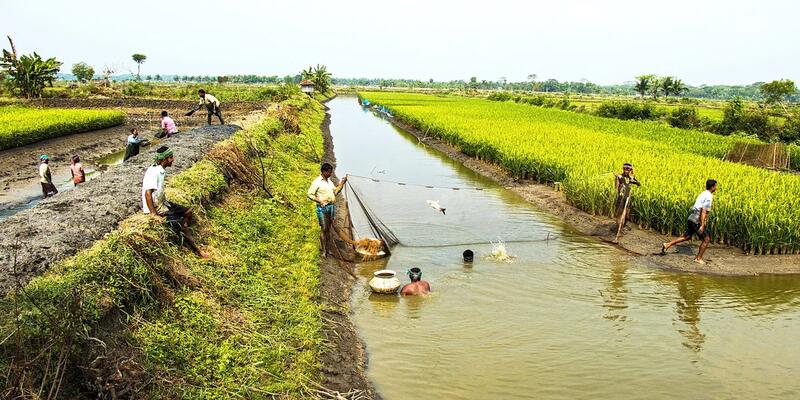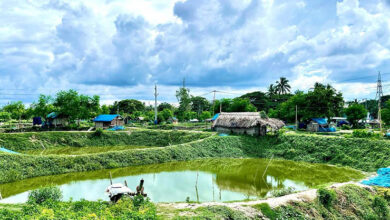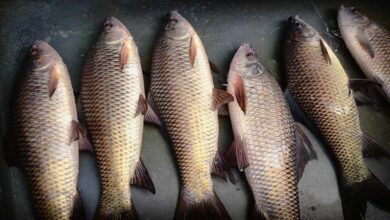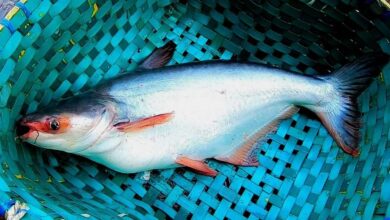
Integrated rice fish farming:
An integrated aquaculture method known as “rice fish farming” combines aquaculture, most typically freshwater fish, with rice production on the same plot of land. It is predicated on the reciprocal advantages that exist between fish and rice within the same agroecosystem.
The FAO designated the system as one of the first globally significant agricultural heritage systems in 2002, through it first started in ancient China about 2000 years ago. This technique’s main goal is to produce the most with the least amount of input in the shortest amount of time.
Potentiality of Integrated rice fish farming:
While the number of fishponds in Bangladesh may be set, there are a lot of paddy and rice fields, and a sizable fraction of these fields are ideal for rice-fish culture. Bangladesh has over 10.14 million hectares of rice fields overall, plus an additional 2.83 million hectares of seasonal rice fields that are submerged and retain water for roughly four to six months. Although these lands and waters’ carrying capacity are not entirely exploited, there is a great deal of room for integration of aquaculture to increase fish production. Integrated rice-fish farming can maximize resource use by utilizing water and land in complementary ways. Enhancing rice cultivation with fisheries contributes to increased productivity, profitability, sustainability, intensification, and diversity.
Advantage of Integrated rice fish farming:
More lucrative than cultivating rice alone, since it generates additional revenue in addition to the primary crop rice, because of its simple technology and minimal input costs. Fish increase soil fertility by making more nitrogen and phosphorus available, which makes this system environmentally sound. The water in rice fields becomes aerated due to the feeding habits of fish. One crucial component of integrated pest control (IPM) in rice fields is integrated rice-fish farming. Fish are important in managing aquatic weeds and algae that harbor pests, spread illness, and compete with rice for nutrients. Fish can also aid in the management of water-borne illnesses and malaria mosquitoes since they consume flies, snails, and other insects. Because fish eat insects and other pests, interactions between fish and rice also contribute to lower production costs. The decrease in chemical inputs could lessen the damage that chemicals unleash into the environment. Methane emissions from rice fields might be decreased by the increased biodiversity. Conversely, fish find planktonic, periphytic, and benthic food in rice fields. Moreover, rice plants’ shading keeps the summertime water temperature suitable for fish.
Disadvantage of this system:
Due to institutional, technological, environmental, and economical limitations, rice-fish farming is still only marginal in Bangladesh. Although technology has proven effective in a number of initiatives and trained a sizable number of farmers, this integration is still not extensively used. Due to the fact that many fish species favor rice fields for breeding, wild fish have traditionally been collected from there. Fish yields were decreased by the introduction of high-yielding varieties (HYV) of rice and the pesticides that went along with it.
Farhana Islam
Agriculturist, Researcher
Fisheries Resource Management, CVASU




